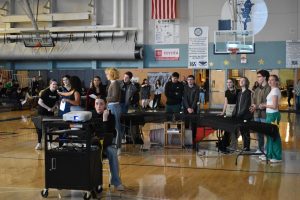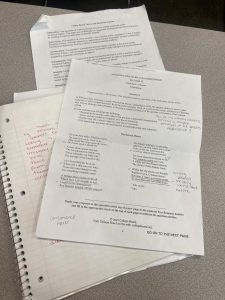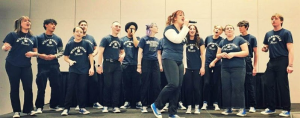Although some students roll their eyes at the thought of cell phone policies in their classrooms, these boundaries are part of a much larger plan to ensure the safety and acceptance of all who enter Wilsonville High School.
Similar to fire drills and lockdown practices, teachers must enforce guidelines to teach students effectively in the best environment possible. Wilsonville High School is currently working towards implementing a “restorative justice approach” to disciplinary scenarios, rather than “zero-tolerance” policies.
Wilsonville’s principal, Mrs. Schmidt, informs teachers that “the gist is to get to the root causes of behavior issues rather than a punitive response to individual incidents.”
Students and faculty of Wilsonville High School need to be ensured safety. The Restorative System works as a protocol for encounters with substances like drugs and alcohol and student behaviors. However, the new plan also confronts disrespectful use of electronics and sets clear expectations for managing profanity in classrooms and halls, disruptive actions, bullying, disrespect of peers and adults, and physical distress.
Sometimes, people may think that they’ve cleared an issue when they’ve really accepted that those actions are permissible. Freshman Grace Ocampo Lazaro, says, “They think they handle things, but the students continue to do it. Maybe they think it’s funny.”
Administrators are guided in dealing with behaviors through a “matrix,” which is founded on the hope that students have the capacity for social-emotional learning. Within this exposition are three categories to observe: classroom-managed behavior, cooperative behavior managed by a teacher, and cooperative behavior managed by the office.
The goal is to redirect behavior, support conversation between teachers and students, and find compromise in the midst of conflict.
The matrix provides suggestions for courses of discipline when addressing behaviors. Some students could face suspensions for their actions, but other consequences include referrals, loss of privileges, or detention.
Another aspect of restorative justice is the involvement of parents and guardians. Adults are encouraged to be aware and educated about the methods Wilsonville High School uses when approaching student behavior/actions.
Still, some students may think these efforts are extensive, even though there has already been a significant change in behavior around school compared to last year.
Before individuals are forced to get to the point of restitution, students are given many chances to change their course of action and reconcile. Countless efforts are taken to reach steadiness with individuals before signing detention or referral slips.
Many examples of these opportunities can be seen daily in classroom routines. Some students have tried meditations, goal setting, counseling, reflective journaling, written apologies, and even conferences in an effort to long-term behavioral shifts.
More commonly seen tactics could be using devices to eliminate classroom distractions, such as phone walls, which remove the issue from sight. Other teachers privately converse with kids to understand and lead students in the moment. Regulate. Relate. Reason.
These mechanisms set teachers and students up for success by publicizing baseline boundaries everyone can follow. Students will know that their actions will face consequences, and choices will be made from there.
Not only does justice focus on highlighting stressed situations, but it also appreciates positively charged student action. With the intent to use positive, encouraging communication, administrators seek to, “Catch someone doing something right,” Mrs. Schmidt shares.
So far, restorative justice has influenced sustaining social, emotional, physical, and academic health. Explicit behaviors shouldn’t harm students. As teachers model a high level of participation and connection, so should students.
Sophomore Oliver Latta testifies to seeing overall improvement across hall behavior and a decrease in vandalism by saying, “They got rid of the doors on the bathrooms.” Taking action has proven to get results. Latta continues, “Emplacing more consequences would produce better actions and show that teachers actually care about their students.”
Restoring justice can be a form of rehabilitation for Wilsonville. These guidelines focus on aligning positive learning communities into classrooms where learning can be driven and proactive. Mrs. Schmidt has even pointed out how she’s seen progress already enterprising as she says, “It is obvious how students and the fundamentals of the relationship are centered through the Restorative Justice plan.”





